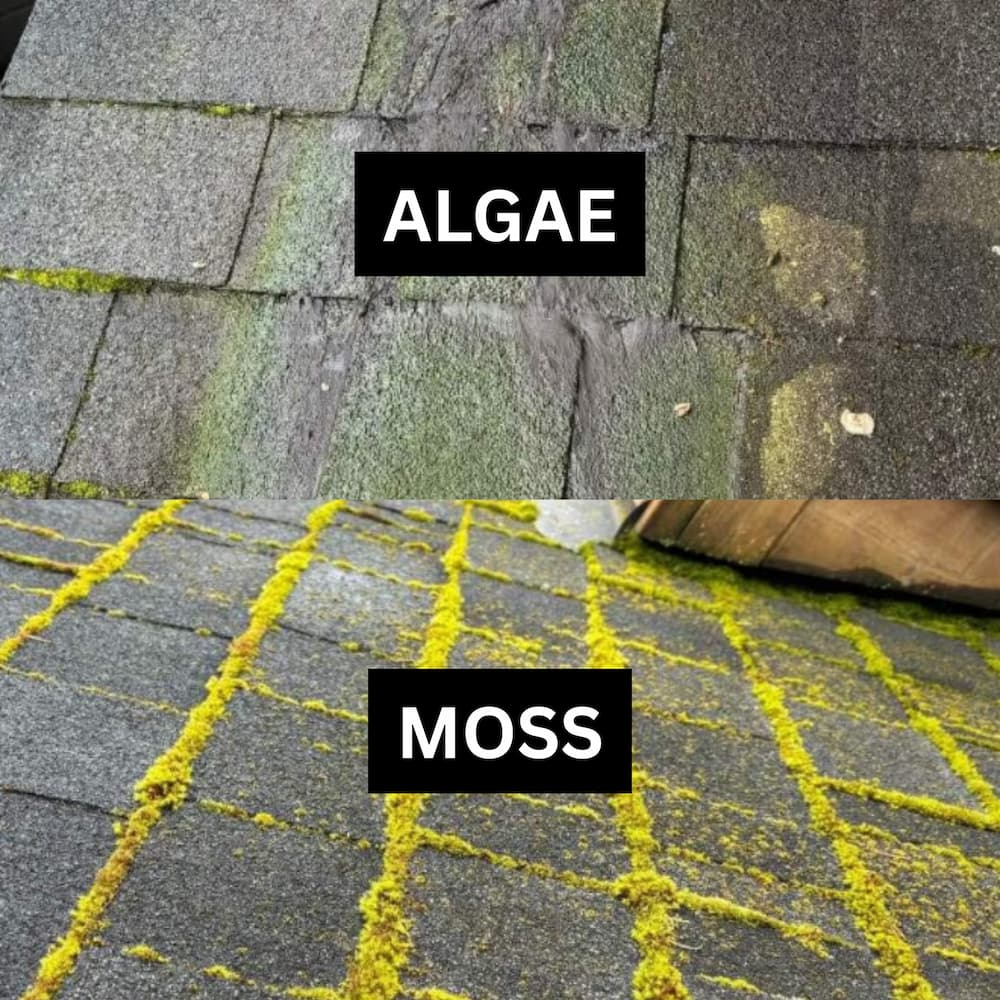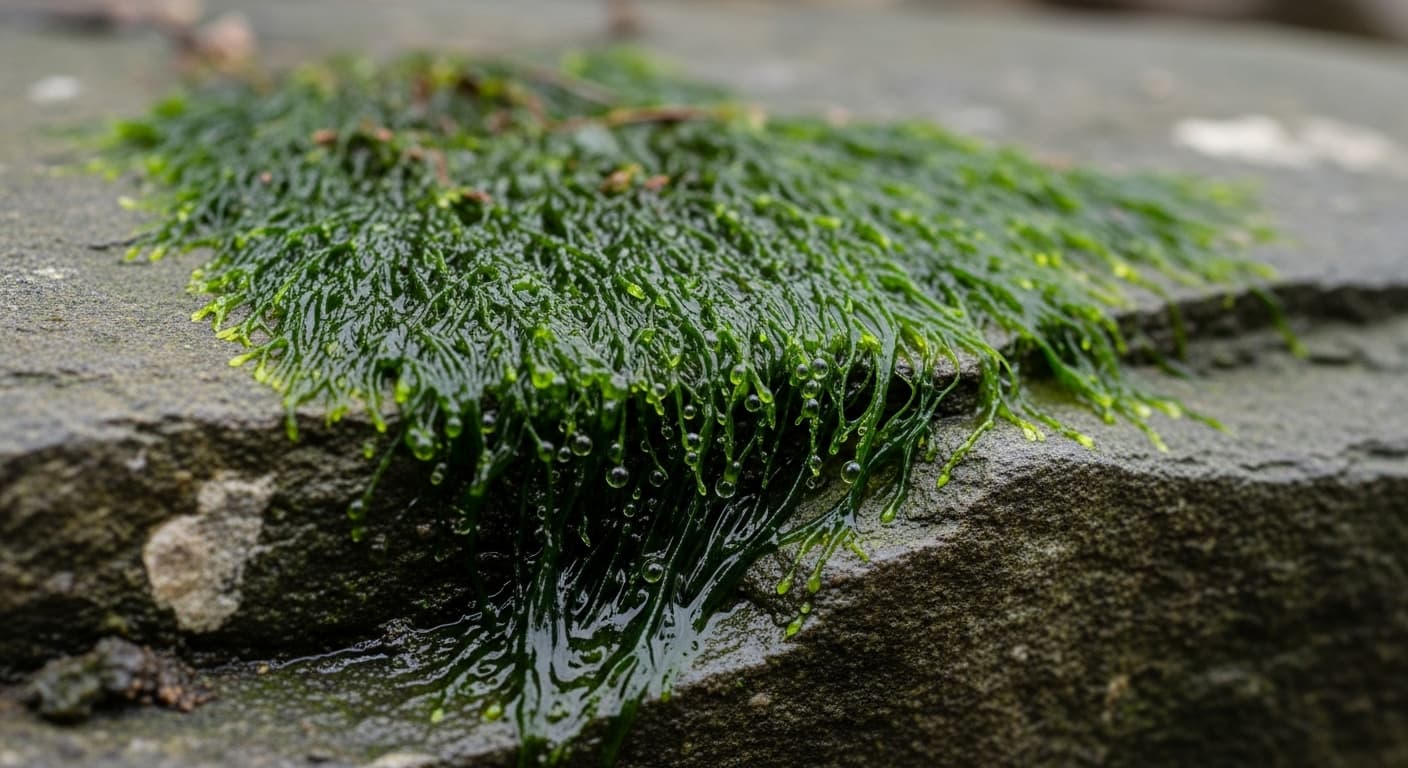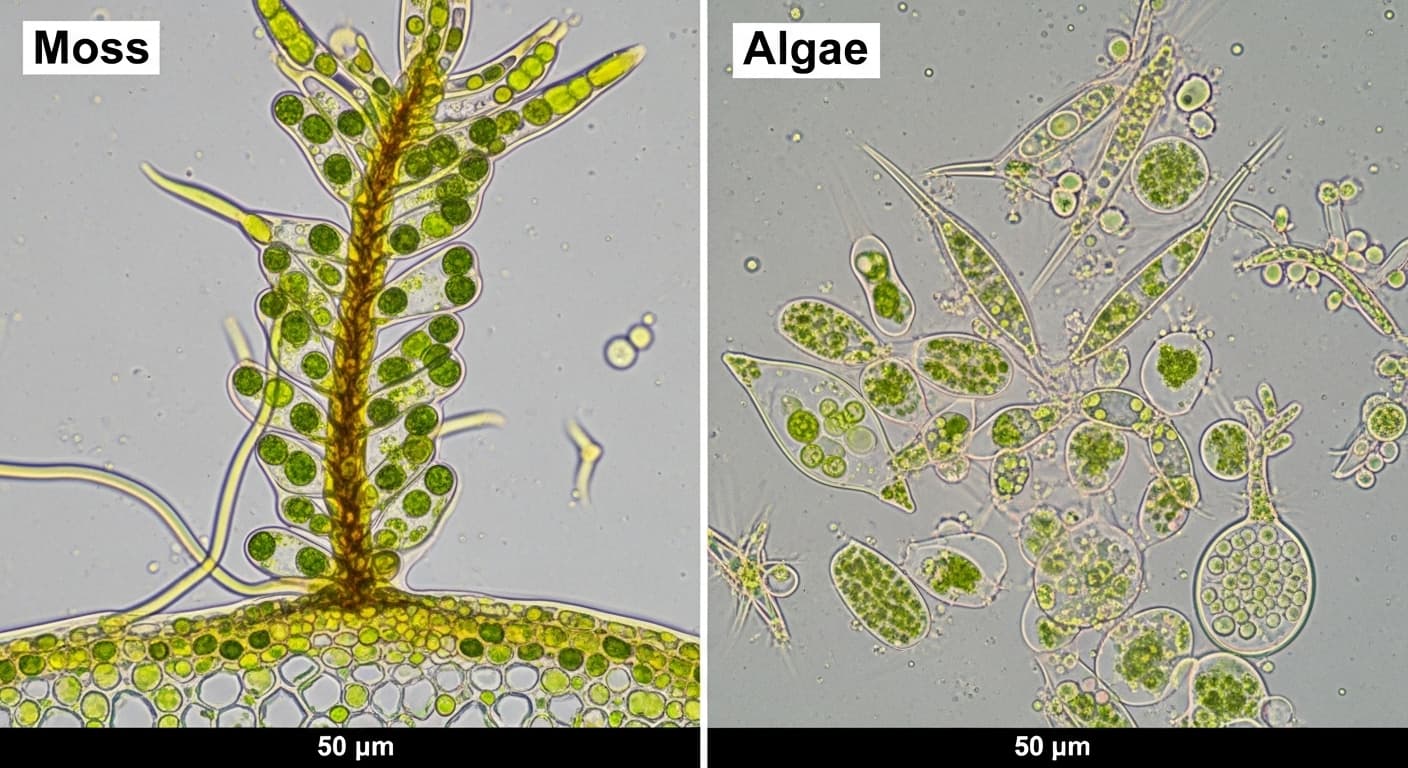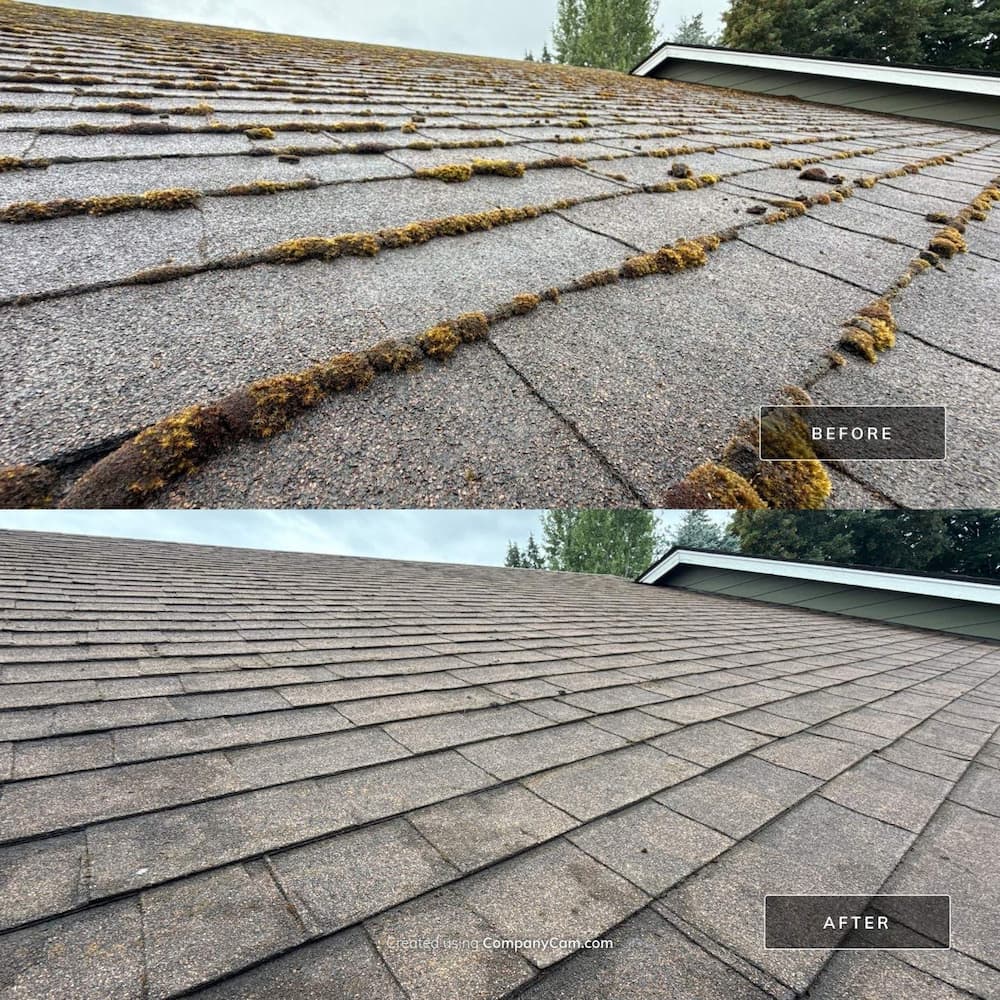Moss is a simple land plant that grows in shady, damp places and soaks up water through its leaves. Algae are more like tiny water-loving organisms, not true plants, that often grow in sunny, wet areas like ponds or on damp surfaces.

Moss and algae are often confused due to their shared love of damp environments and green appearance, but they’re fundamentally different in structure, habitat, and behavior. Understanding the differences between them can help homeowners, landscapers, and nature lovers better manage outdoor spaces and appreciate their unique ecological benefits.
Moss is a small, non-vascular plant that belongs to the Bryophyta group. Unlike most plants, moss doesn’t have roots. Instead, it uses structures called rhizoids to anchor itself to surfaces such as soil, rocks, tree trunks, or roofs. Moss thrives in shaded, consistently moist environments.
Moss reproduces via spores and requires water for fertilization. It typically grows in dense green mats or clumps and is often found carpeting forest floors, old stone walls, and rooftops.

Ecological Benefits of Moss:
Algae is an umbrella term for a diverse group of mostly aquatic organisms. They range from microscopic phytoplankton to large seaweeds like kelp. Algae don’t have true roots, stems, or leaves, but they do contain chlorophyll for photosynthesis.
Unlike moss, algae are commonly found in water, including ponds, lakes, and oceans, but can also grow on wet surfaces like sidewalks, fences, or siding in shady areas.

Ecological Benefits of Algae:
Appearance:

Both moss and algae play important roles in their ecosystems.
Moss:
Algae:
Moss:
Algae:
Tip: Lighting and texture help tell them apart. Moss is dry and soft; algae is wet and slippery.
Even though moss and algae are beneficial in natural ecosystems, they can be harmful when they start growing on your roof.
Moss holds moisture against the shingles, which can lead to wood rot, lifting shingles, and creating a perfect environment for leaks to develop.
Algae, on the other hand, may not cause as much structural damage but can stain and discolor roofing materials, reducing curb appeal and potentially shortening the lifespan of your shingles over time.
Regular roof cleaning is essential for protecting your investment. Having moss and algae professionally removed not only extends the life of your roof but also helps prevent costly repairs in the future.

While moss and algae may look similar at first glance, knowing the difference can help you manage your property more effectively. Moss supports soil health and adds visual charm, especially in shaded landscapes. Algae plays a powerful role in water ecosystems but can become a nuisance on hard surfaces when unmanaged.
Understanding these two green organisms means appreciating their place in nature and making informed decisions about when to remove, control, or simply let them be.
We earn trust by delivering a consistently great experience. Clients return year after year, confident they’ll receive the same high-quality service.
Our skilled crews provide workmanship that impresses and holds up over time.
We offer fair, competitive pricing so customers can enjoy top-tier service without stretching their budget.